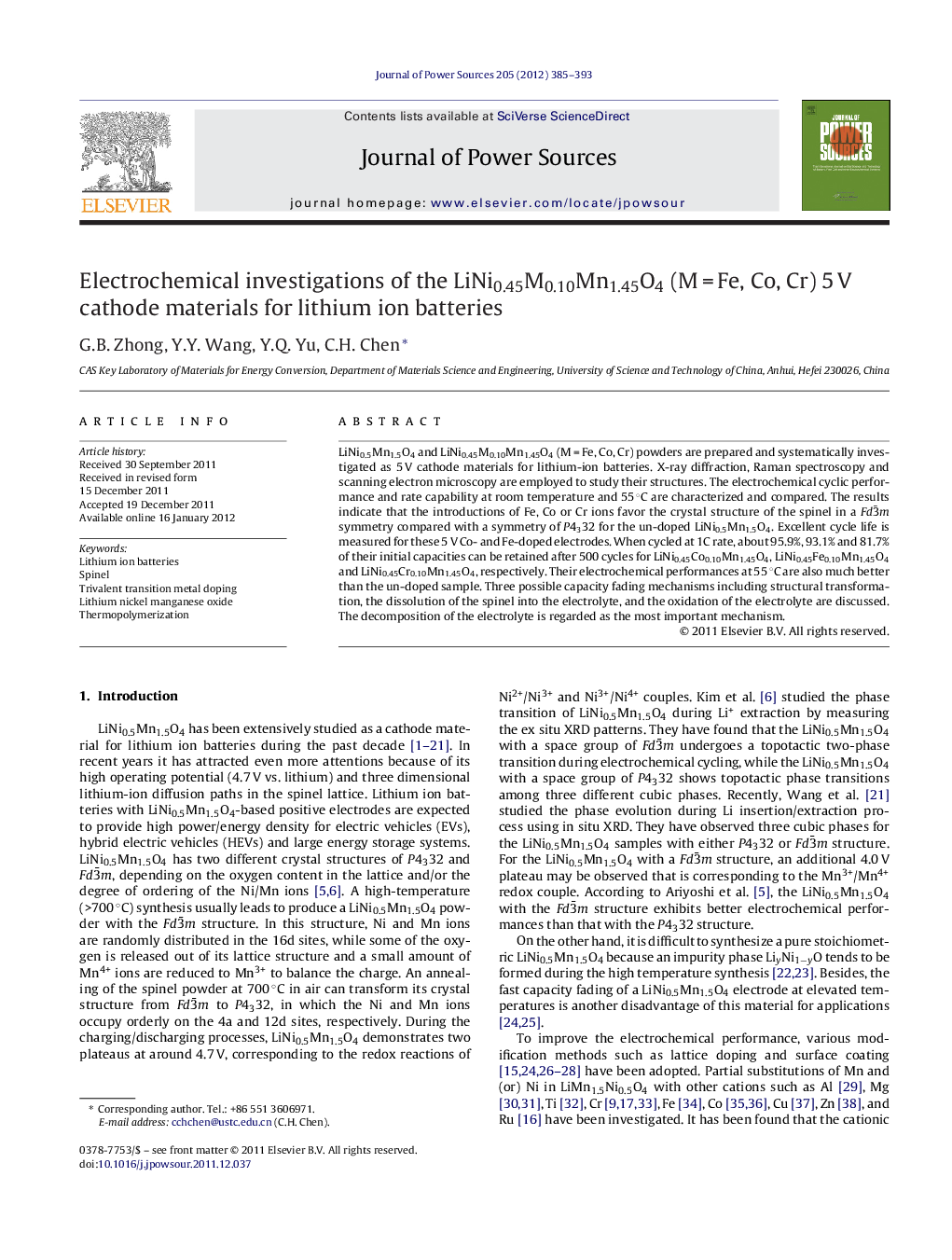| Article ID | Journal | Published Year | Pages | File Type |
|---|---|---|---|---|
| 1288157 | Journal of Power Sources | 2012 | 9 Pages |
LiNi0.5Mn1.5O4 and LiNi0.45M0.10Mn1.45O4 (M = Fe, Co, Cr) powders are prepared and systematically investigated as 5 V cathode materials for lithium-ion batteries. X-ray diffraction, Raman spectroscopy and scanning electron microscopy are employed to study their structures. The electrochemical cyclic performance and rate capability at room temperature and 55 °C are characterized and compared. The results indicate that the introductions of Fe, Co or Cr ions favor the crystal structure of the spinel in a Fd3¯m symmetry compared with a symmetry of P4332 for the un-doped LiNi0.5Mn1.5O4. Excellent cycle life is measured for these 5 V Co- and Fe-doped electrodes. When cycled at 1C rate, about 95.9%, 93.1% and 81.7% of their initial capacities can be retained after 500 cycles for LiNi0.45Co0.10Mn1.45O4, LiNi0.45Fe0.10Mn1.45O4 and LiNi0.45Cr0.10Mn1.45O4, respectively. Their electrochemical performances at 55 °C are also much better than the un-doped sample. Three possible capacity fading mechanisms including structural transformation, the dissolution of the spinel into the electrolyte, and the oxidation of the electrolyte are discussed. The decomposition of the electrolyte is regarded as the most important mechanism.
► Trivalent transition metal elements Fe-, Co- and Cr-doped LiNi0.45M0.10Mn1.45O4 (M = Fe, Co and Cr) powders are prepared and investigated under the same conditions. ► LiNi0.45Fe0.10Mn1.45O4 and LiNi0.45Co0.10Mn1.45O4 show excellent cyclic and rate performances at room temperature and 55 °C. ► The Fe- and Co-doped spinels exhibit the best data in literature for this important 5 V cathode material.
